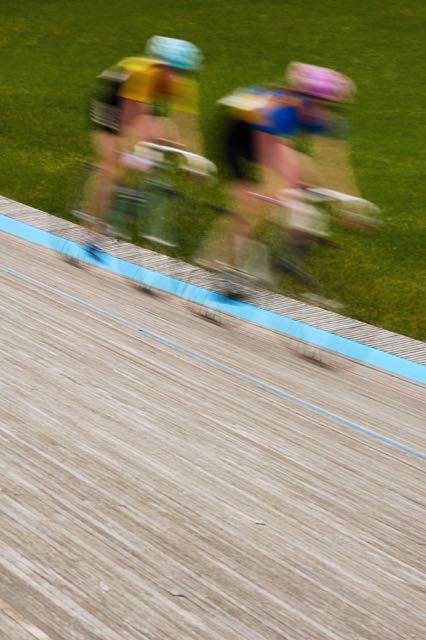A magazine where the digital world meets the real world.
On the web
- Home
- Browse by date
- Browse by topic
- Enter the maze
- Follow our blog
- Follow us on Twitter
- Resources for teachers
- Subscribe
In print
What is cs4fn?
- About us
- Contact us
- Partners
- Privacy and cookies
- Copyright and contributions
- Links to other fun sites
- Complete our questionnaire, give us feedback
Search:
Back (page) pedal
by Peter W McOwan, Queen Mary University of London

At the 2016 Rio summer Olympics, when cyclists Laura Trott, Katie Archibald, Joanna Shand and Elinor Barker crossed the winning line, they smashed the existing world record to defeat the USA, with Trott becoming the first British woman to win three Olympic gold medals. Impressive feet! In tribute to their bicycling lives we consider how computer science, cunning tech and cycling have hit the road together.
Sky high
GPS in cars is common, but GPS on a bike takes cycling to a whole new level. Systems can now let you know exactly where you are and how far you have cycled. They can also detect if your bike has been stolen and is heading off into places it wouldn't be expected. But to know where you are on the road needs the on-board computer to know where satellites are whizzing high above in orbit. It's by calculating the distance from these satellites that your position on the ground is known. What's even more impressive is that the accuracy of the GPS also depends on Einstein's theory of relativity which is used to calculate the terrestrial positions.
Winning line: up!
Hat help
Cycle helmets are a safety essential. Computer scientists have been using supercomputers to design 3D printed helmets that could help reduce brain damage in an accident. A main cause of brain damage is that as you hit a hard surface, your brain twists inside your skull. The new helmets are designed to allow the skull to move a little in the helmet in case of an accident so potentially reducing brain damage. Being able to 3D print safety helmets also allows computers to design the helmets themselves using AI. Not to be left behind you can 3D print a steel bicycle frame too.
Winning line: ouch!
A helping foot
Cycling up a hill can be exhausting. Wouldn't it be nice to have a friendly bit of computer science to help you along. That's exactly what electrical assist systems do. Using sensors distributed about the bike and pedals, the on-board computer monitors the ways you are cycling around 1000 times a second. An electric motor that helps drive the wheels gives a boost of up to 20 miles an hour whenever the computer thinks it would help you along and smooth the ride.
Winning line: zoom!
Laser bright laser light
Sometimes other road users don't notice cyclists. The consequences of this low visibility can be serious. The answer? Build lights with sensors which know when it's getting dark. To make it brighter still engage the laser! In one system the bright graphics of a cycle is projected from the handlebar onto the road just in front. In much of the USA, cars are not allowed to approach within three feet when overtaking. To ensure the car knows where your virtual 'bike lane' is, your bike projects two laser beams onto the road marking out your space with a space age shine.
Winning line: zap!
Eyes down look forward
Head up displays are normally associated with jet fighters, allowing the pilot to see the readout from the plane's instruments projected onto a transparent screen in front of their eyes, so they aren't distracted. Smart sunglasses show the bike rider useful data such as speed, heart rate, distance and even a map. The mini-projector sits on a stalk in front of the lens and shines the signal onto the surface of the sunglasses.
Winning line: forward!
Cycle desk generator
Normally we consider sitting at a desk to be a fairly lazy relaxing thing to do. But one company makes simply sitting a powerful activity. The 'bike desk' is, well, a bike attached to a desk. As you sit on the bike you can work on the desk surface in front while your legs feverishly peddle beneath, generating electricity. The invention produces enough electricity to power your laptop. Perhaps, in the future, you will join other bike desk friends to generate enough electricity to sell to the national grid. A renewable energy source that keeps you fit and switched on.


